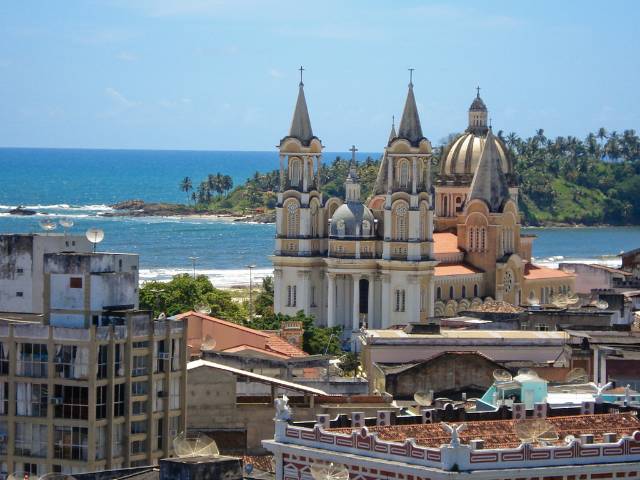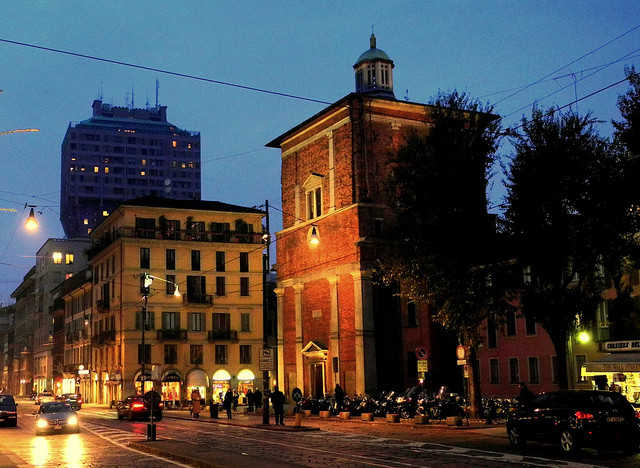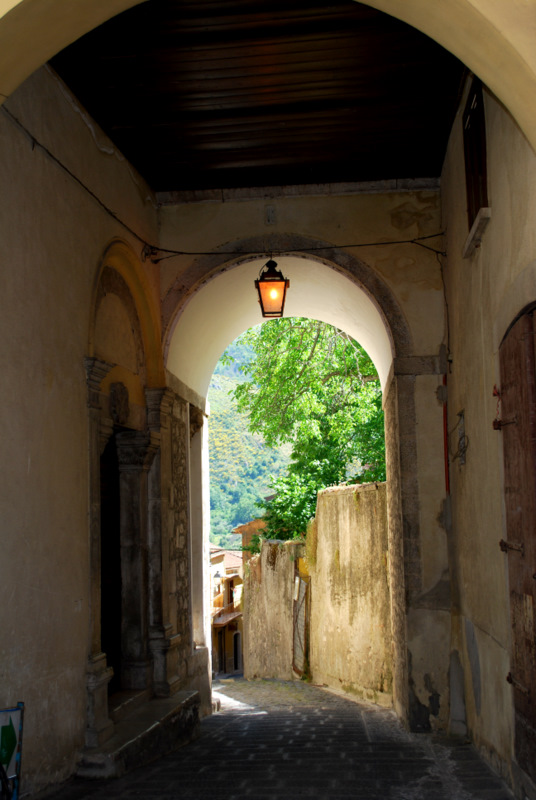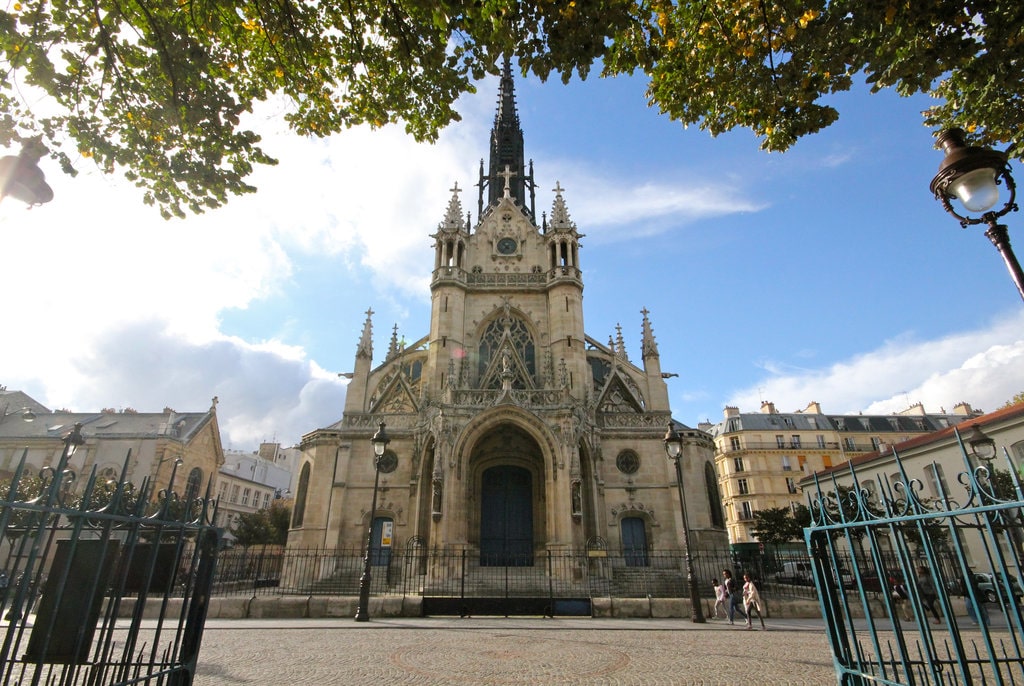The real church dedicated to the Madonna of the same name is not the one visible to the eyes of the passerby, but is the one below, which was buried following the flood of 1488 that raised the street level several meters.
The present church, on the other hand, was built in 1333 at the behest of King Robert of Anjou of Naples, in honor of the marriage of his niece Joan I to Andrew of Hungary, son of King Charles Humbert. Also, not far away, Robert of Anjou himself had a small church erected in honor of "Our Lady," to enhance the event.
The origins of the appellation "well" to Our Lady are different:
the painting of the Virgin in the well of the Roman villa;
the ancient depiction of Our Lady;
the well of the Villa Paradiso;
the well-shaped burial of the ancient chapel.
Exterior
The upper part of the facade, which dates back to the 16th century, is the only area that has been renovated several times.
It was originally Romanesque in style and was modified in 1968. It features an arched balcony that rests on columns and a large rose window above. Its renovation was entrusted to Gregorio Pecchia, who was the guardian at the time.
The lower part consists of three gray tuff arches supported by columns with Corinthian-style capitals. These precede a wide wooden portal, all decorated with panels. The coat of arms of the royal family of the Aragonese is clearly visible in the center of the structure. The crypt area was initially the ancient pronaos dedicated to the church, formed by porticos supported by columns and cross vaults. Currently, the crypt is characterized by works of art depicting the Madonna.
The religious building is flanked by a Romanesque-style bell tower and is the only structure not yet modified by man. It is characterized by four levels recessed in height, a large clock placed in the center of the whole and a metal cross on the tip of the sphere at the top. The area to the rear of the bell tower is occupied by an old oven, which, because of its cusp shape, is associated with an additional bell tower that existed in the past.
Interior
Although the church dates back to Angevin times, there are some frescoes and columns that predate the structure, dating back to the 11th century. In fact, it is said that there where the building stands today, there once stood a temple dedicated to Jupiter Summano, which, with the advent of Christianity, was transformed into a church where the new religion was professed. Another hypothesis, however, traces the ancient architecture and paintings to an underground chapel. In fact, in the floor, there is a trapdoor that was used to store the bones of the dead.
The church, once filled with altars adorned with candelabras and paintings, consists of a single nave, with a barrel-vaulted vault opening into blind niches. From the hall, it is also possible to descend to the so-called "well," which holds the painting of St. Mary of the Well, or St. Mary of Milk because it depicts the Virgin nursing the Child. That painting is set in a stucco frame positioned in a marble altar. Other paintings are present, however, which due to moisture are increasingly fading.
The well was ventilated by a small skylight, and next to it there was (not visitable to this day) another chapel that still preserves a 14th-century painting depicting the Crucifixion scene. This cistern was probably a part of the city’s ancient Roman villas, used for storing wine.
According to tradition, this sort of burrow was used by Queen Joan as a way out for fleeting love encounters.
The apse
This is the oldest area of the church. Its importance is due to the four pictorial layers that have followed one another over time.
First Layer
This is a Byzantine painting depicting the ascension.
Second Layer
It is a refinement of the first to which inscriptions have been added.
Third Layer
It depicts "Our Lady" seated on a throne with her son in her arms and the apostles around her. In this painting Our Lady appears with a crown on her head, hence the other name attributed to her, namely St. Mary of the Crown or Crowned.
Fourth Layer
Depicts the Immaculate Conception with angels around her venerating her.
Masterpieces of the Church
The structure features a number of artistic beauties, some even from the time of the Aragonese.
Of note are the paintings on the left side of the nave that have as their subject scenes from the Old and New Testaments.
At the top we find a series of decorations depicting the wounds of Jesus Crucified, and in the center is the Franciscan coat of arms with a shield. The floor, which dates from the 15th century, is composed of majolica tiles.
At the foot of the apse is a plaque of the patrician Paolo Capograsso with his life-size image. From the 18th century onward the church was used as a hypogeum, and the tombs of the nobles are placed along the side walls of the apse.
A life-size painting of the Crucifixion and a circular stoup are clearly visible next to the well area.













